Get the weekly SPARTANAT newsletter.
Your bonus: the free E-Book from SPARTANAT.
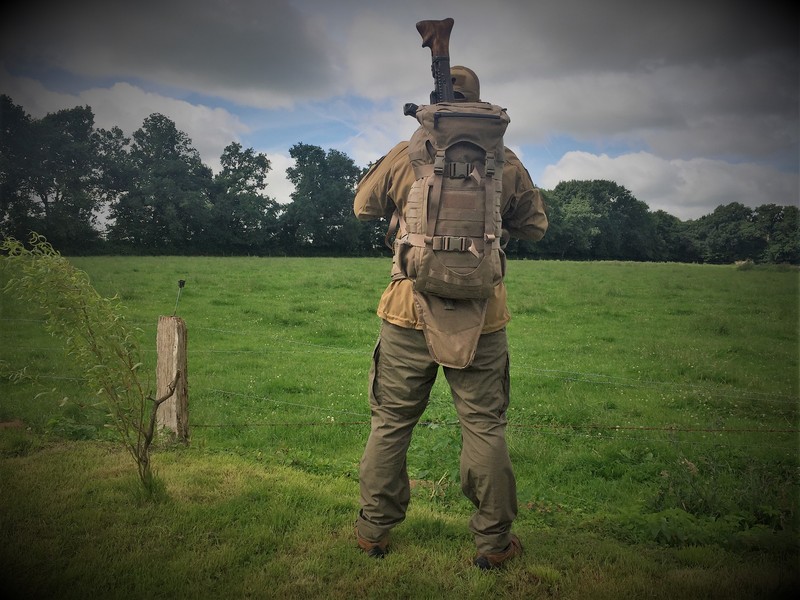
REVIEW: Eberlestock Gunslinger 2 Gen I
The text discusses the Eberlestock Gunslinger backpack, specifically focusing on the first generation model. It details the features of the backpack such as the integrated weapon scabbard, fast access to weapons, and organizational compartments. The text also highlights differences between the first and second generation models, emphasizing the weight-saving benefits of the older model. Various images of the backpack are included to provide visual reference.
Eberlestock has become known for its Gunslinger and Halftrack series. The Gunslinger is also frequently seen in pictures of the US Marine Corps snipers. The first model is called the Gunslinger GS05 and is still available. The Gunslinger 2 is now only available in the Generation 2 on the official website, but we wanted to specifically introduce you to the Gunslinger from the first generation.
Three backpacks with almost the same name - where's the difference? First of all, they all have the same volume of 44 liters and the same basic structure: A backpack with a fixed integrated weapon scabbard.
The UR model GS05 is a pure toploader and only has a three-quarter zipper on the side in the front area, providing access to the undivided main compartment. We don't want to say much more about this pack, since we're focusing on the Gunslinger 2.
We're introducing the backpack from the first generation because it does NOT yet have the new Intex 2 frame, which makes the backpack almost 1.2 kilograms lighter - and therefore potentially more interesting, but more on that later.
Other than the padding and the frame, as far as we know nothing has changed, we currently only have this model on hand - if anyone knows of any changes, we will add that.
The Gen I Gunslinger 2 consists of a fixed integrated weapon carry pouch, which forms the rear wall of the main backpack. It is wide and long enough to accommodate sniper rifles like the SR-25 or bolt-action rifles with optics. An AR-15 also fits, and can even be stored with a 30-round magazine and red dot sight. With shorter weapons, you can choose how far they should protrude from the backpack by unfolding the sheath foot or stowing it in the space in between.
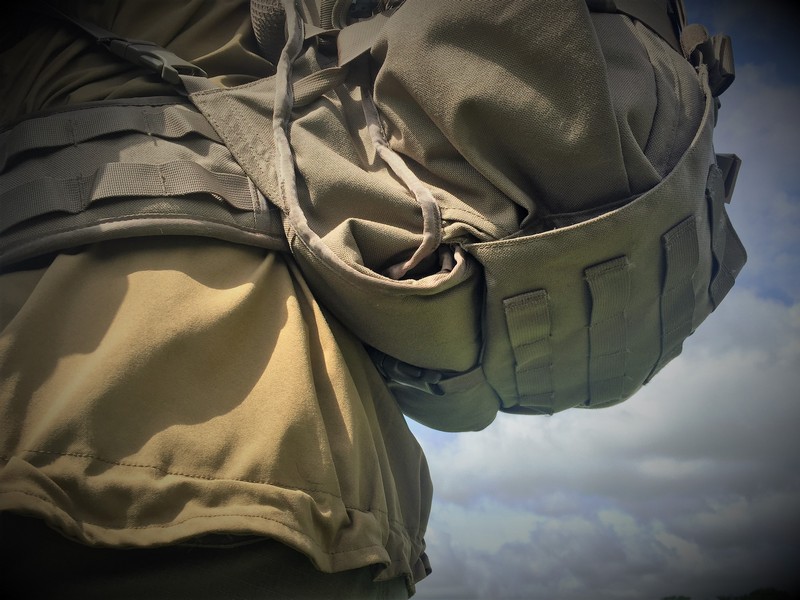
This is done with a Fastex closure that prevents accidental unfolding. An AR15 with a 16.75" length and fully retracted stock completely disappears with full bag length….
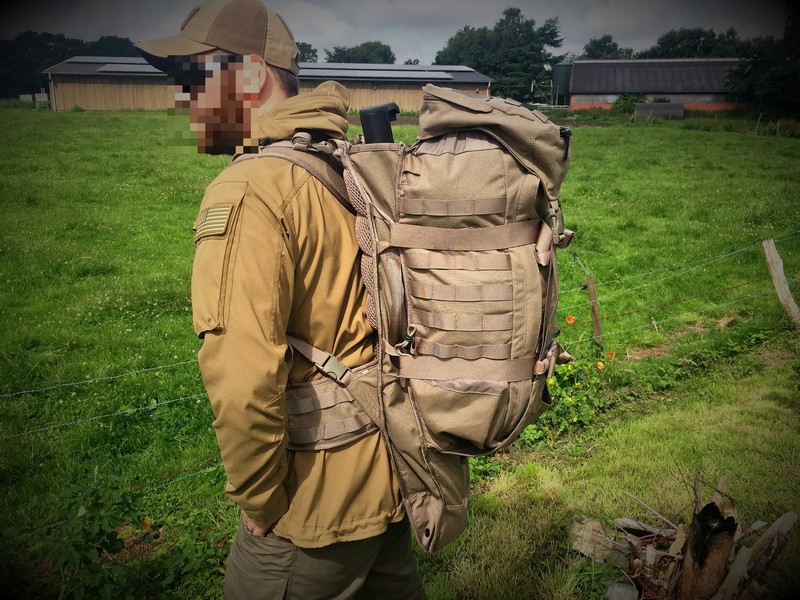
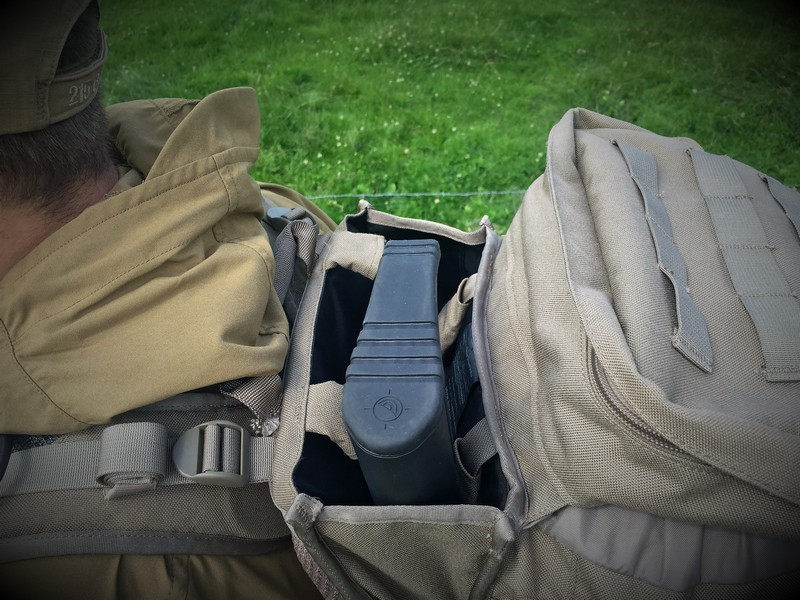 ….and protrudes in compact mode from the magazine.
….and protrudes in compact mode from the magazine.
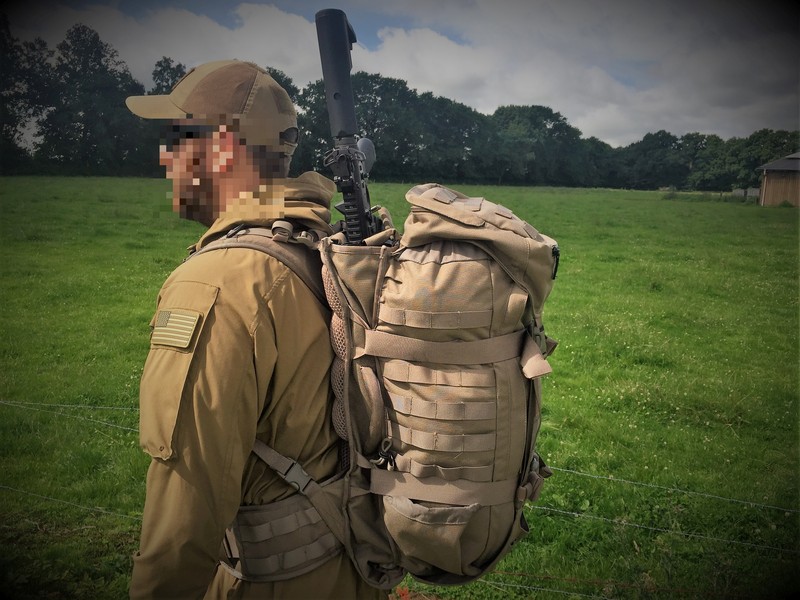 This provides very quick access to the weapon and allows you to draw it without having to take off the backpack. For discreet carrying, the weapon pouch can be opened at the bottom, and the rifle almost completely disappears. If the barrel is longer, a zipper on the back of the carrying device can be opened to allow the barrel to protrude unprotected.
This provides very quick access to the weapon and allows you to draw it without having to take off the backpack. For discreet carrying, the weapon pouch can be opened at the bottom, and the rifle almost completely disappears. If the barrel is longer, a zipper on the back of the carrying device can be opened to allow the barrel to protrude unprotected.
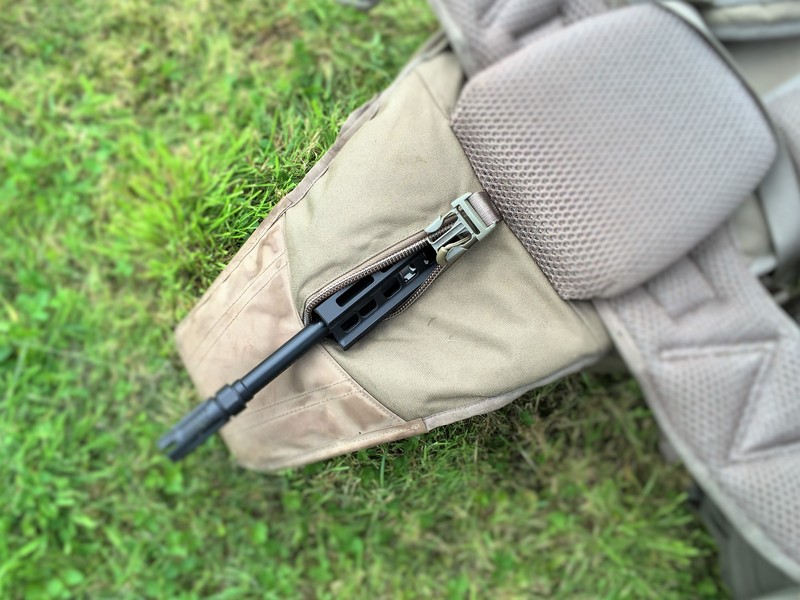 A cover ensures protection from above when weapons protrude, covering the upper part.
A cover ensures protection from above when weapons protrude, covering the upper part.
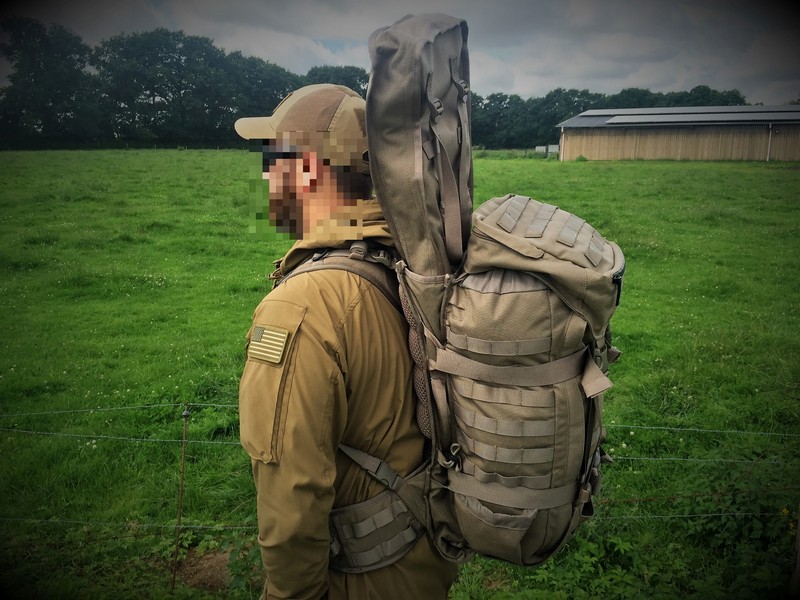 This cover is secured with Fastex closures and unfortunately ends inside the actual pouch, allowing rain and dust to penetrate. Without the cover, the weapon can be secured at the top with two Fastex closures, if desired.
This cover is secured with Fastex closures and unfortunately ends inside the actual pouch, allowing rain and dust to penetrate. Without the cover, the weapon can be secured at the top with two Fastex closures, if desired.
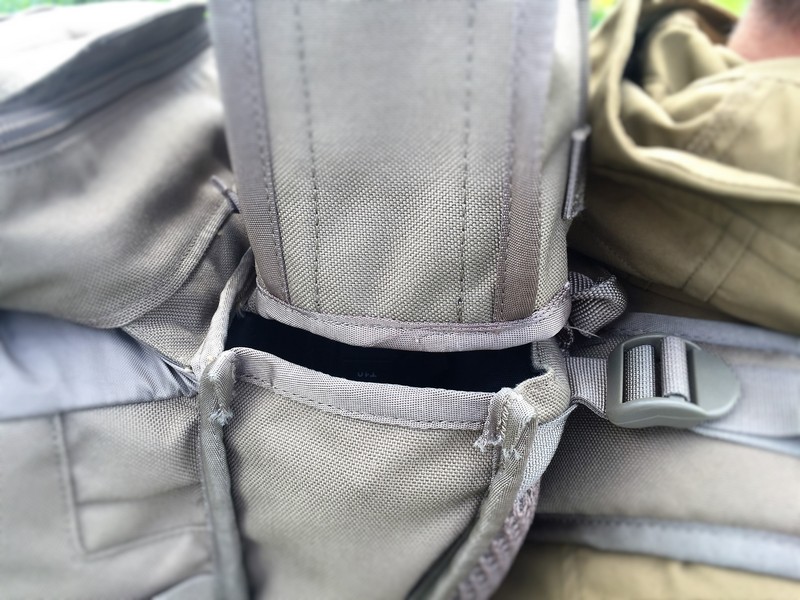
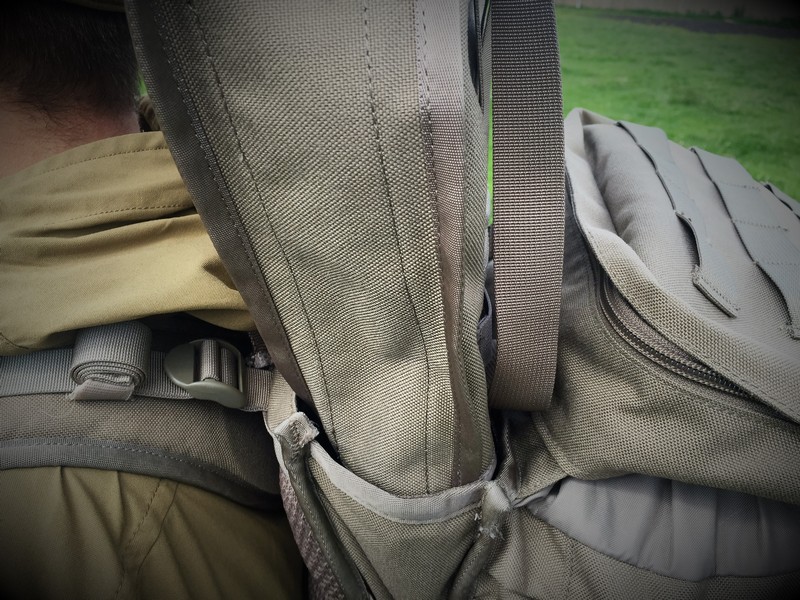 When not carrying a long gun, the unused portion can be pressed against the main compartment with the surrounding compression straps.
When not carrying a long gun, the unused portion can be pressed against the main compartment with the surrounding compression straps.
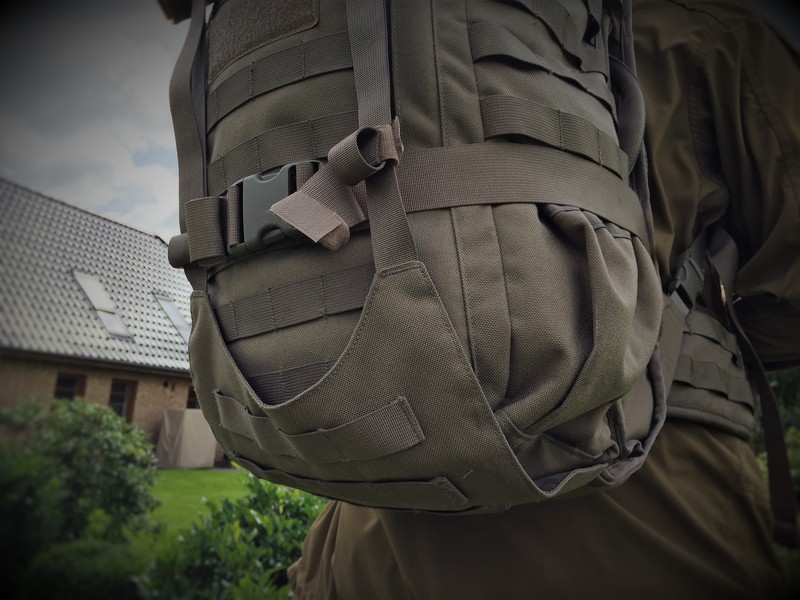 The carrying system in Generation I is quite simple and basically consists of back padding, shoulder straps, a detachable hip belt, and a chest strap. A stable frame sheet or aluminum stays are missing - which is also the reason why the backpack was redesigned in Generation 2.
The carrying system in Generation I is quite simple and basically consists of back padding, shoulder straps, a detachable hip belt, and a chest strap. A stable frame sheet or aluminum stays are missing - which is also the reason why the backpack was redesigned in Generation 2.
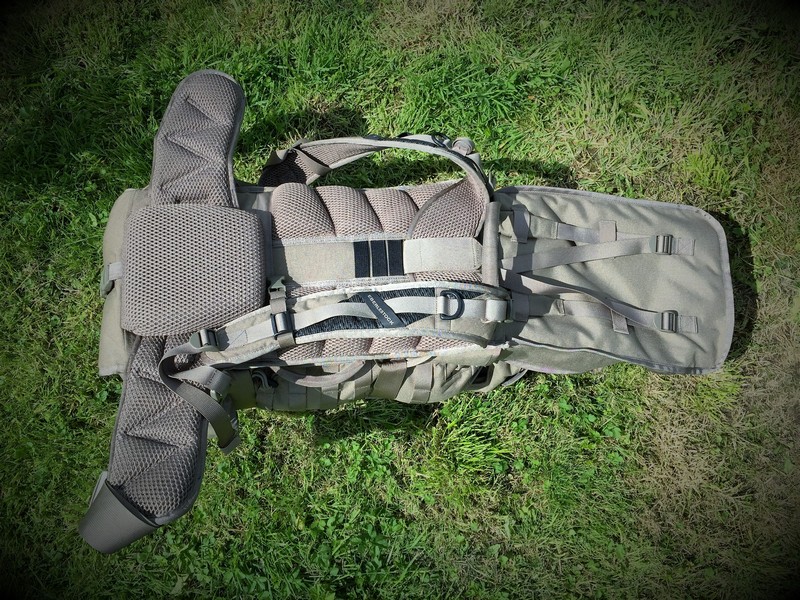 The shoulder straps are anatomically shaped and lightly padded, and they can be adjusted in height to a certain extent.
The shoulder straps are anatomically shaped and lightly padded, and they can be adjusted in height to a certain extent.
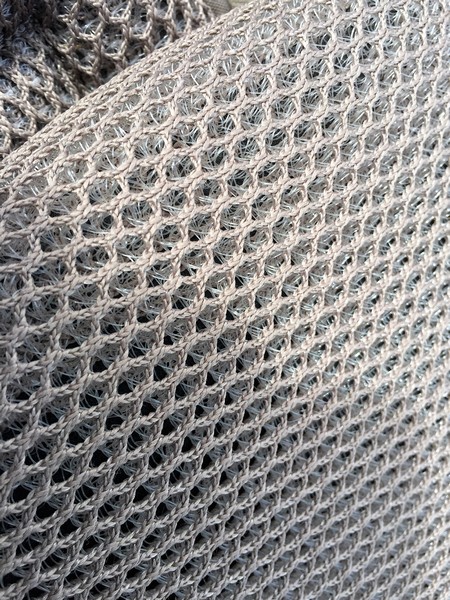
However, the backpack sits quite high with the hip belt, even when choosing the highest adjustment. This is due to its original purpose: Backpack over plate carrier and possibly even a battle belt underneath.
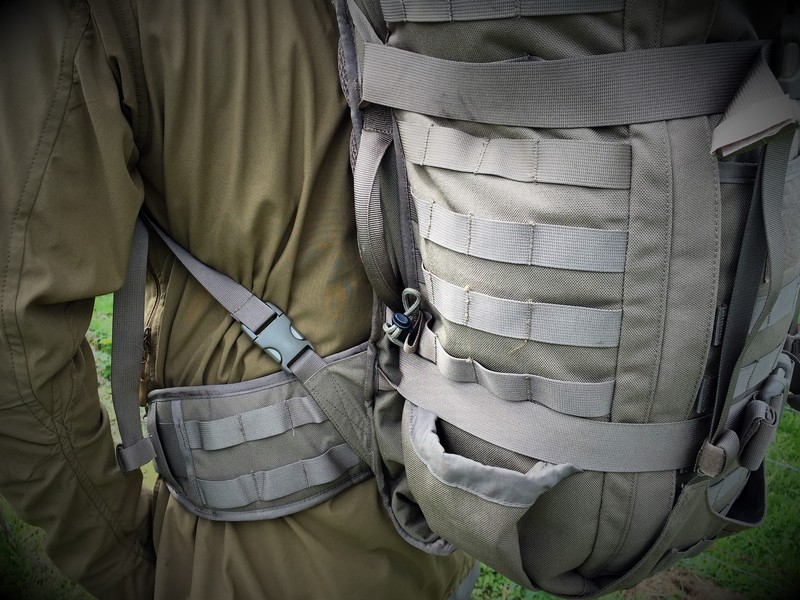
The hip belt is fastened with Velcro under a hip pad and can be removed quite quickly. There are two rows of MOLLE with 4 loops available here for attaching equipment. The belt is closed and tightened with a large Fastex buckle, with movement pulling backwards.
The actual backpack can now be opened from the top AND the front compared to the predecessor, greatly facilitating the organization of equipment.
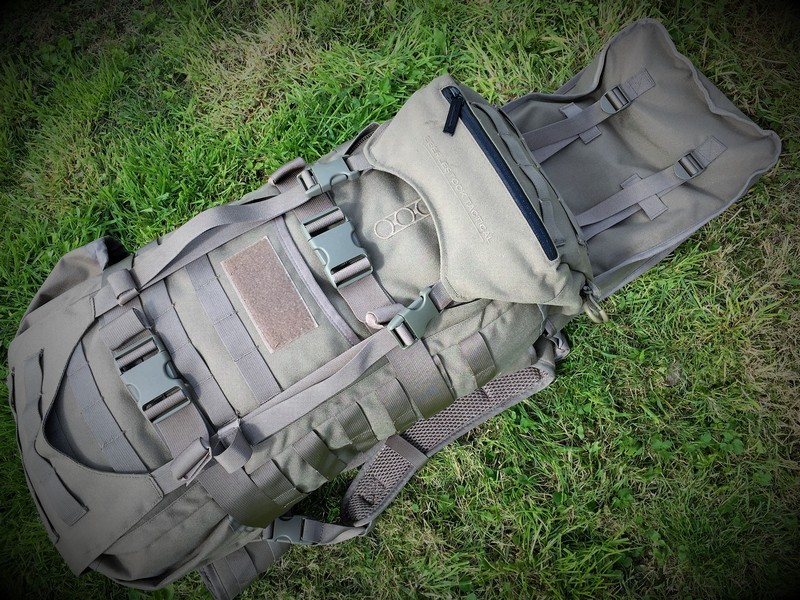 In addition, elastic pockets have been added to the main compartment, which are located on the back wall and in the lower area.
In addition, elastic pockets have been added to the main compartment, which are located on the back wall and in the lower area.
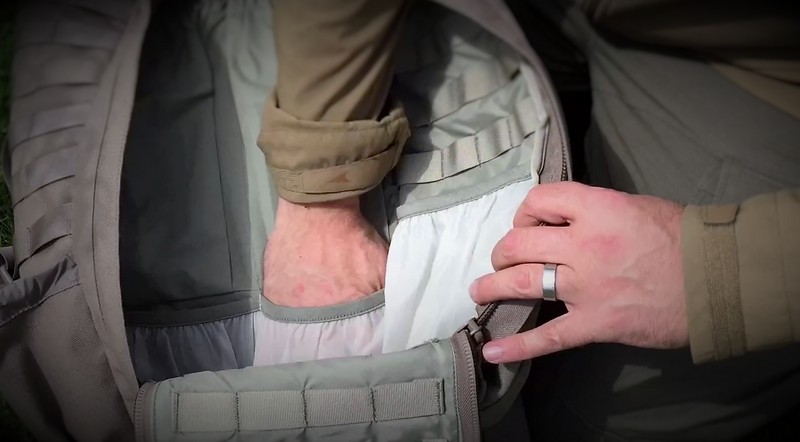
The pockets on the back - two in number - are probably intended for hydration bladders, but due to the partition in the middle, they have a rather odd size. You can fit 1-liter and 2-liter bladders in there, but then the 1-liter bladder is so short that space in the bag is not used, and the 2-liter bladder almost protrudes too far upwards. We have not tested a three-liter bladder, but it most likely will not fit, if there are already such problems with the 2-liter bladder.
SPARTANAT is the online magazine for Military News, Tactical Life, Gear & Reviews.
Send us your news: [email protected]
Ad
similar
Get the weekly SPARTANAT newsletter.
Your bonus: the free E-Book from SPARTANAT.


